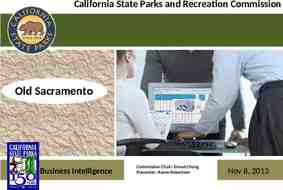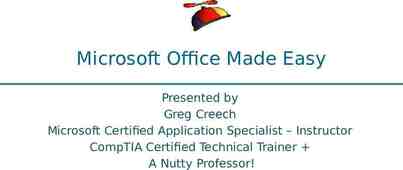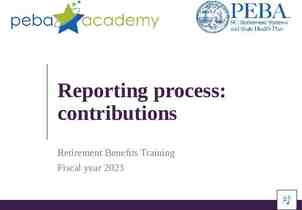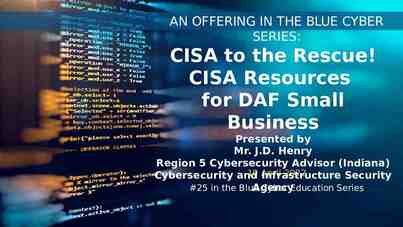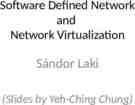Risk Management Principles of Information Security, 2nd Edition 1
36 Slides446.00 KB

Risk Management Principles of Information Security, 2nd Edition 1

Learning Objectives Upon completion of this material, you should be able to: Define risk management, risk identification, and risk control Understand how risk is identified, assessed and controlled Principles of Information Security, 2nd Edition 2

Introduction Risk management: process of identifying and controlling risks facing an organization Risk identification: process of examining an organization’s current information technology security situation Risk control: applying controls to reduce risks to an organizations data and information systems Principles of Information Security, 2nd Edition 3

An Overview of Risk Management Know yourself: identify, examine, and understand the information and systems currently in place Know the enemy: identify, examine, and understand threats facing the organization Principles of Information Security, 2nd Edition 4

Risk Identification Assets are targets of various threats and threat agents Risk management involves identifying organization’s assets and identifying threats/vulnerabilities Risk identification begins with identifying organization’s assets and assessing their value Principles of Information Security, 2nd Edition 5

Principles of Information Security, 2nd Edition 6

Asset Identification and Valuation Iterative process; begins with identification of assets, including all elements of an organization’s system (people, procedures, data and information, software, hardware, networking) Assets are then classified and categorized Principles of Information Security, 2nd Edition 7

Table 4-1 - Categorizing Components Principles of Information Security, 2nd Edition 8

People, Procedures, and Data Asset Identification Human resources, documentation, and data information assets are more difficult to identify People with knowledge, experience, and good judgment should be assigned this task These assets should be recorded using reliable datahandling process Principles of Information Security, 2nd Edition 9

People, Procedures, and Data Asset Identification (continued) Asset attributes for people: position name/number/ID; supervisor; security clearance level; special skills Asset attributes for procedures: description; intended purpose; what elements is it tied to; storage location for reference; storage location for update Asset attributes for data: classification; owner/creator/ manager; data structure size; data structure used; online/ offline; location; backup procedures employed Principles of Information Security, 2nd Edition 10

Hardware, Software, and Network Asset Identification What information attributes to track depends on: Needs of organization/risk management efforts Management needs of information security/information technology communities Asset attributes to be considered are: name; IP address; MAC address; element type; serial number; manufacturer name; model/part number; software version; physical or logical location; controlling entity Principles of Information Security, 2nd Edition 11

Information Asset Classification Many organizations have data classification schemes (e.g., confidential, internal, public data) Classification of components must be specific to allow determination of priority levels Categories must be comprehensive and mutually exclusive Principles of Information Security, 2nd Edition 12

Information Asset Valuation Questions help develop criteria for asset valuation: which information asset is most critical to organization’s success? generates the most revenue/profitability? would be most expensive to replace or protect? would be the most embarrassing or cause greatest liability if revealed? Principles of Information Security, 2nd Edition 13

Data Classification and Management Variety of classification schemes used by corporate and military organizations Information owners responsible for classifying their information assets Information classifications must be reviewed periodically Most organizations do not need detailed level of classification used by military or federal agencies; however, organizations may need to classify data to provide protection Principles of Information Security, 2nd Edition 14

Threat Identification Realistic threats need investigation; unimportant threats are set aside Threat assessment: Which threats present danger to assets? Which threats represent the most danger to information? How much would it cost to recover from attack? Which threat requires greatest expenditure to prevent? Principles of Information Security, 2nd Edition 15

Principles of Information Security, 2nd Edition 16

Vulnerability Identification Specific avenues threat agents can exploit to attack an information asset are called vulnerabilities Examine how each threat could be perpetrated and list organization’s assets and vulnerabilities Process works best when people with diverse backgrounds within organization work iteratively in a series of brainstorming sessions At end of risk identification process, list of assets and their vulnerabilities is achieved Principles of Information Security, 2nd Edition 17

Risk Assessment Risk assessment evaluates the relative risk for each vulnerability Assigns a risk rating or score to each information asset Principles of Information Security, 2nd Edition 18

Documenting the Results of Risk Assessment Final summary comprised in ranked vulnerability risk worksheet Worksheet details asset, asset impact, vulnerability, vulnerability likelihood, and risk-rating factor Ranked vulnerability risk worksheet is initial working document for next step in risk management process: assessing and controlling risk Principles of Information Security, 2nd Edition 19

Risk Control Once ranked vulnerability risk worksheet complete, must choose one of four strategies to control each risk: Apply safeguards (avoidance) Transfer the risk (transference) Reduce impact (mitigation) Understand consequences and accept risk (acceptance) Principles of Information Security, 2nd Edition 20

Avoidance Attempts to prevent exploitation of the vulnerability Preferred approach; accomplished through countering threats, removing asset vulnerabilities, limiting asset access, and adding protective safeguards Three common methods of risk avoidance: Application of policy Training and education Applying technology Principles of Information Security, 2nd Edition 21

Transference Control approach that attempts to shift risk to other assets, processes, or organizations If lacking, organization should hire individuals/firms that provide security management and administration expertise Organization may then transfer risk associated with management of complex systems to another organization experienced in dealing with those risks Principles of Information Security, 2nd Edition 22

Mitigation Attempts to reduce impact of vulnerability exploitation through planning and preparation Approach includes three types of plans: Incident response plan (IRP) Disaster recovery plan (DRP) Business continuity plan (BCP) Principles of Information Security, 2nd Edition 23

Mitigation (continued) DRP is most common mitigation procedure The actions to take while incident is in progress is defined in IRP BCP encompasses continuation of business activities if catastrophic event occurs Principles of Information Security, 2nd Edition 24

Acceptance Doing nothing to protect a vulnerability and accepting the outcome of its exploitation Valid only when the particular function, service, information, or asset does not justify cost of protection Risk appetite describes the degree to which organization is willing to accept risk as trade-off to the expense of applying controls Principles of Information Security, 2nd Edition 25

Selecting a Risk Control Strategy Level of threat and value of asset play major role in selection of strategy Rules of thumb on strategy selection can be applied: When a vulnerability exists When a vulnerability can be exploited When attacker’s cost is less than potential gain When potential loss is substantial Principles of Information Security, 2nd Edition 26

Figure 4- 8- Risk Handling Decision Points Principles of Information Security, 2nd Edition 27

Principles of Information Security, 2nd Edition 28

Cost Benefit Analysis (CBA) Most common approach for information security controls is economic feasibility of implementation CBA is begun by evaluating worth of assets to be protected and the loss in value if those assets are compromised The formal process to document this is called cost benefit analysis or economic feasibility study Principles of Information Security, 2nd Edition 29

Cost Benefit Analysis (CBA) (continued) Items that impact cost of a control or safeguard include: cost of development; training fees; implementation cost; service costs; cost of maintenance Benefit is the value an organization realizes by using controls to prevent losses associated with a vulnerability Asset valuation is process of assigning financial value or worth to each information asset; there are many components to asset valuation Principles of Information Security, 2nd Edition 30

Benchmarking An alternative approach to risk management Benchmarking is process of seeking out and studying practices in other organizations that one’s own organization desires to duplicate One of two measures typically used to compare practices: Metrics-based measures Process-based measures Principles of Information Security, 2nd Edition 31

Benchmarking (continued) Standard of due care: when adopting levels of security for a legal defense, organization shows it has done what any prudent organization would do in similar circumstances Due diligence: demonstration that organization is diligent in ensuring that implemented standards continue to provide required level of protection Failure to support standard of due care or due diligence can leave organization open to legal liability Principles of Information Security, 2nd Edition 32

Benchmarking (continued) Best business practices: security efforts that provide a superior level protection of information When considering best practices for adoption in an organization, consider: Does organization resemble identified target with best practice? Are resources at hand similar? Is organization in a similar threat environment? Principles of Information Security, 2nd Edition 33

Problems with Applying Benchmarking and Best Practices Organizations don’t talk to each other (biggest problem) No two organizations are identical Best practices are a moving target Knowing what was going on in information security industry in recent years through benchmarking doesn’t necessarily prepare for what’s next Principles of Information Security, 2nd Edition 34

Summary Risk identification: formal process of examining and documenting risk present in information systems Risk control: process of taking carefully reasoned steps to ensure the confidentiality, integrity, and availability of components in organization’s information system Risk identification A risk management strategy enables identification, classification, and prioritization of organization’s information assets Residual risk: risk that remains to the information asset even after the existing control is applied Principles of Information Security, 2nd Edition 35

Summary Risk control: four strategies are used to control risks that result from vulnerabilities: Apply safeguards (avoidance) Transfer the risk (transference) Reduce impact (mitigation) Understand consequences and accept risk (acceptance) Principles of Information Security, 2nd Edition 36

